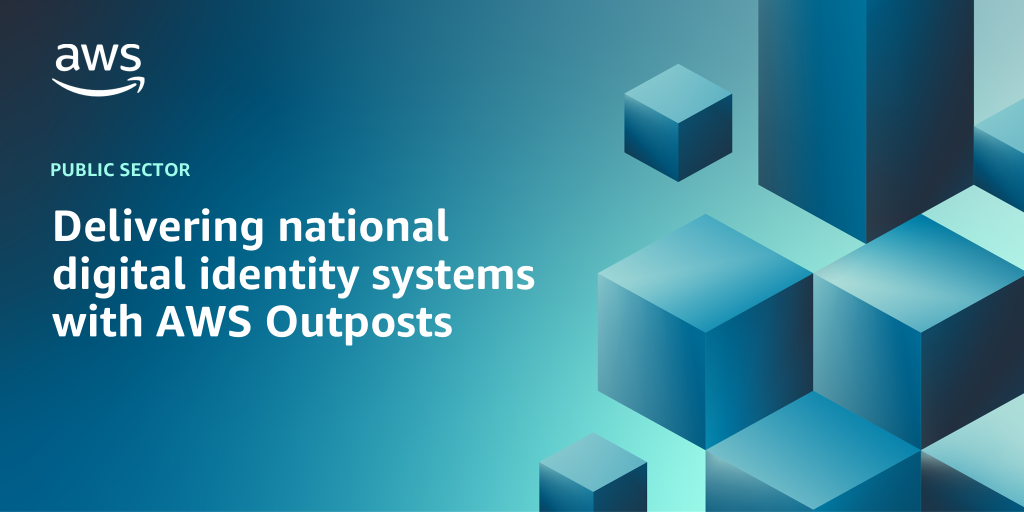AWS Public Sector Blog
Tag: best practices
Generative AI in EdTech: 5 pitfalls to avoid for long-term success
Today’s education technology (EdTech) leaders face intense pressure to “do something with AI.” Fear of missing out has created a mentality where companies rush out AI features without understanding what problems they’re solving for their users. At AWS, we work closely with EdTech leaders navigating the generative AI landscape, and we’ve seen these patterns emerge repeatedly. Based on our experience collaborating with EdTech organizations across the education spectrum, we’ve created a list of five common pitfalls that derail generative AI efforts and the strategic approaches we recommend to avoid them.
Delivering national digital identity systems with AWS Outposts
As governments worldwide seek to modernize their services, secure and scalable digital identity systems are becoming essential infrastructure. Through a combination of AWS Outposts, digital identity solutions like Modular Open Source Identity Platform (MOSIP), and innovative architectures that couple cloud capabilities with data residency requirements, governments can build digital identity systems that are reliable, resilient, and ready for the future. Read this post to learn more.
Benchmarking PacBio whole genome sequencing variant pipeline analysis with AWS HealthOmics workflows
This post demonstrates PacBio’s whole genome sequencing variant pipeline implementation on AWS HealthOmics, offering performance optimization insights and evidence-based recommendations for cost-effective deployment at scale based on extensive benchmarking.
Six key considerations for procuring cloud-based contact center solutions in the public sector
The shift to cloud-based Contact Center as a Service (CCaaS) solutions offers significant opportunities for public sector organizations to transform their operations, reduce costs, and improve citizen services. Amazon Web Services (AWS) provides innovative cloud technologies like Amazon Connect that can help organizations achieve these goals. However, traditional procurement approaches may not be well-suited for acquiring these modern cloud technologies. To help organizations navigate this transition, we’ve identified six key considerations when procuring a CCaaS solution like Amazon Connect.
Proactive strategies for cyber resilience and business continuity on AWS
AWS recommends that organizations prepare to recover workloads in case of cybersecurity incidents or business continuity events such as technical or natural disasters. In this post, we offer guidance and strategies for public sector organizations to use AWS infrastructure to operate resilient systems in the cloud.
Building an AI-powered scientific meeting transcription platform with AWS
In this post, we explore how to build a sophisticated meeting transcription and analysis platform using AWS services, designed specifically for the scientific community. Our solution combines the power of AWS Transcribe, Amazon Bedrock, and other Amazon Web Services (AWS) services to create an intelligent tool that transforms how researchers document and analyze their discussions.
Building resilient healthcare systems through cloud computing
A newly released guide by AWS titled “Resilient Healthcare through Cloud: A Strategy and Policy Guide” provides a comprehensive framework for enhancing healthcare resilience through cloud computing while meeting regulatory requirements and improving patient outcomes. Read this post to learn more.
Enabling the mission autonomy flywheel: The AWS four-phase approach to defense innovation
In this post, you will learn how AWS technologies support the entire autonomous system lifecycle from AI-powered design and virtual prototyping in pre-deployment, to edge computing through services like AWS IoT Core and AWS IoT Greengrass and related solution guidance like Tactical Edge Application Deployment on AWS and Cloud Edge Global Access (CEGA) during deployment, through real-time mission operations, and finally to post-mission evolution using secure over-the-air updates and predictive maintenance.
Planning for failure: How to make generative AI workloads more resilient
As more and more public sector organizations deploy generative AI workloads, we are increasingly asked what can be done to make sure that these workloads are resilient to failures. In this post, we discuss the key factors that mission-based organizations should consider so that their generative AI workloads are resilient to failures.
Empowering the public sector with Amazon Q Business: Best practices for security, efficiency, and scalability
By using generative AI, government agencies can analyze large amounts of data to identify patterns and insights, streamline manual processes, and deliver faster, personalized, more accessible services to citizens while maintaining the highest standards of accuracy and compliance. Read this post to learn more.









